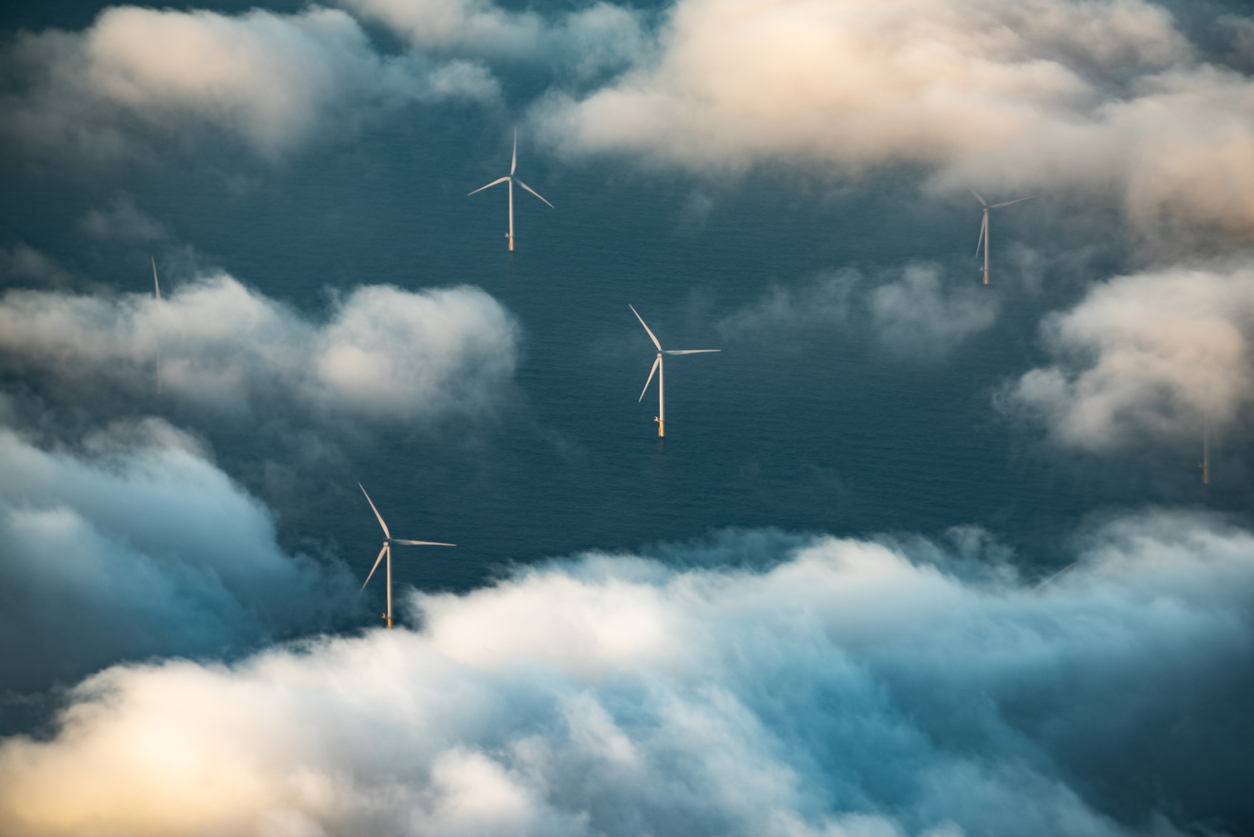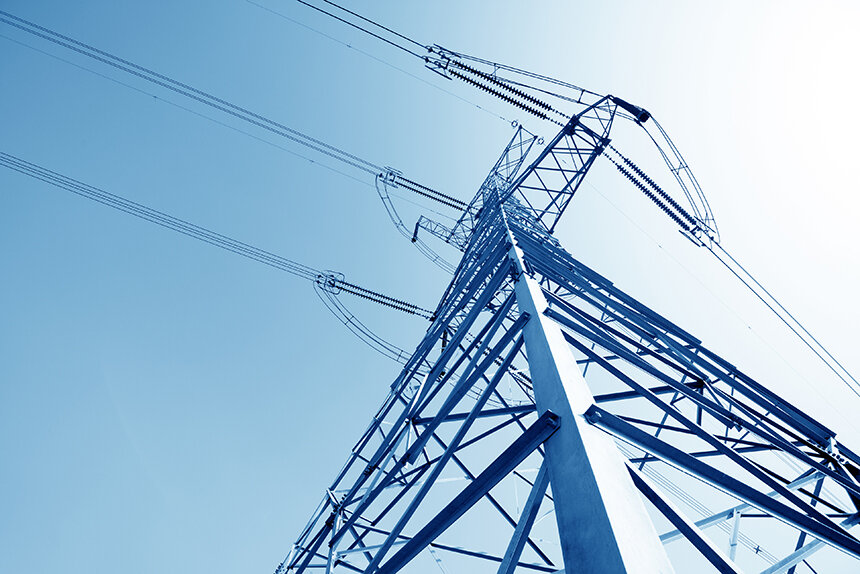Forecast Calls for More Vertical Wind
Looking forward as this renewable energy sector grows up
January 12, 2014
The U.S. wind industry has come a long way since the first array came online in 1975 with the capacity to power 4,000 homes. There are now 815 wind facilities in operation, according to estimates from the U.S. Energy Information Administration, with enough combined capacity to provide electricity for 15 million homes.
Last August, the U.S. Department of Energy reported that for the first time wind became the No. 1 source of new electricity generation capacity, accounting for 43 percent of electric additions in 2012.
While wind has evolved tremendously, its growth has largely been in one direction and on one plane: up and horizontal.
“We are getting to the point where blades are up to 75 meters long, 100 meters off the ground, and the cost is going through the roof,” said Alexander Smits, the Eugene Higgins professor of mechanical and aerospace engineering at Princeton University. “There is so much more attention being paid to horizontal turbines — all the investment, scaling up and technological innovation.”
Focusing on horizontal-axis turbines has proven beneficial in terms of generating megawatts, but other factors may be increasingly important to the long-term viability of the industry. Just ask people living in the shadow — or “shadow flicker” — of towering horizontal turbines.
What’s the alternative? According to Smits, there is room for growth in another area of wind technology that offers key advantages, especially for communities.
“I’ve stood right underneath one of these turbines, and when it was spinning, you couldn’t hear any noise from the blades,” Smits said, describing a 20-meter-high prototype of a vertical-axis wind turbine. It’s a design that poses no significant threat to wildlife, doesn’t interfere with radar and is barely audible even at close range.
The problem: Consumers aren’t likely to see them anytime soon. Not unless they take a trip to the California desert, where researchers from the California Institute of Technology (CalTech) have installed an array of vertical-axis turbines to test and demonstrate the potential for this technology.
Vertically challenged
John Dabiri is leading the vertical charge. The professor of aeronautics and bioengineering at CalTech said that while vertical-axis turbines have been around since the early 1980s, the technology was tripped up by an awkward debut.
With the nation in the midst of an energy crisis at the time, efficiency was on everybody’s mind. So when it came to evaluating emerging wind technologies, Dabiri said the conversion factor from wind to energy trumped all.
“In part because they involve more complicated aerodynamics, it’s difficult to design a vertical-axis turbine that can be as efficient as a horizontal turbine one to one,” he said. Plus, the early verticals had major reliability issues.
However, as wind farms grow to encompass hundreds of turbines, Dabiri said the question should change. “It becomes important to ask not only: How does an individual turbine interact with the wind? But: How does it interact with the array as a whole?”
It seems that vertical-axis turbines interact well with their peers. Dabiri and his team at CalTech have demonstrated that optimized arrays of vertical-axis wind turbines can actually capture “leftover” wind energy that would otherwise have been lost.
He explained that in horizontal-axis wind arrays the “wake” — or disturbed air that has passed through a turbine — persists in a spiraling pattern, which burdens the other turbines downwind, impacting performance.
But in vertical-axis wind turbines, the wake occurs in manageable patterns. Dabiri said you can arrange the turbines in a manner that takes advantage of these patterns, effectively controlling and directing the disturbed air so it feeds into other turbines, rather than slowing them down.
It’s a principle manifest in a more organic kind of array: schools of fish. Dabiri connected the dots while teaching a course on swimming and flying, recognizing affinities between the mathematical formulas his team was using to optimize wind arrays and those that describe how fish conserve energy by swimming in certain formations.
Despite this system-level breakthrough, verticals are still bogged down by the operational issues of a fledgling technology. In a sense, they are trapped in the past.
“These systems are 30 years behind in terms of investment compared to horizontal-axis wind turbines,” Dabiri said. “The cost comparison with horizontals off the shelf is like apples and oranges.”
While scientists now have a handle on how to bring verticals into the 21st century, the remaining challenge is convincing people that it’s worth doing. Dabiri listed a few compelling reasons: birds, bats and visual impacts. In all cases, verticals appear to solve those problems, he said.
The issue is, most consumers have never heard of vertical turbines.
Image problems
Two years ago this month, a panel of experts in neurology, mechanical engineering, environmental health, epidemiology and risk management completed a “Wind Turbine Health Impact Study” for the state of Massachusetts.
The independent panel had been commissioned by the departments of Environmental Protection and Public Health to scour the scientific literature for evidence that noise, vibration, shadow flicker and ice-throw from wind turbines constitute risks to public health.
While ice thrown from the blade of a turbine is an obvious danger to anyone standing in the wrong place at the wrong time, the panel found no support for allegations that noise, vibration or shadow flicker pose significant threats.
That is, other than profound annoyance. As explained in the 164-page report, “self-reported annoyance … appears to be a function of some combination of the sound itself, the sight of the turbine, and attitude towards the wind turbine project.”
It’s not a problem to be dismissed. This past June, Gov. Deval Patrick established the “Wind Turbine Noise Technical Advisory Group” to advise the Department of Environmental Protection (DEP) on potential changes to noise regulations as they apply to wind turbines.
Given the state’s commitment to wind energy, it’s important to hammer out these details. In 2009, Patrick set a goal of developing 2,000 megawatts of wind capacity by 2020, and there’s still a ways to go. According to the American Wind Energy Association, there were 103 megawatts of installed wind capacity in Massachusetts as of June 2012. Even with 539 MW worth of projects currently in the works, that leaves a 1358-MW gap to fill over the next six years.
The most recent data from the Energy Information Administration indicate that just 0.1 percent of total energy in Massachusetts is generated by wind. For comparison, Iowa, Texas and California generated 15.9 percent, 6.4 percent and 4.3 percent, respectively, of their total electricity using wind turbines.
What’s the difference between Massachusetts and the states that are leading the way in wind? Among other things, open space.
“Massachusetts is densely populated, and we have lots of high-priced land,” said Jennie C. Stephens, associate professor of environmental science and policy at Clark University. In fact, Massachusetts boasts the third-highest population density in the United States, behind Rhode Island and New Jersey.
Stephens said it’s important to consider state-specific context in order to understand the climate for developing wind and other renewable energies. In this sense, there are certainly challenges that are unique to Massachusetts. But she explained that in reality, resolving issues with wind energy requires a finer lens. Although the state sets the standards, wind turbines are regulated through local health and zoning boards.
“There is this desire to decentralize energy systems and have more control at the local level, but most systems are still centralized,” Stephens said. “So it’s hard to meet state goals when communities aren’t coming up with these ideas themselves.”
Two pairs of bills in the Legislature articulate the point.
The first — HB 2980 and SB 1590 — represent the Wind Siting Reform Act carried over from the previous legislative session. The act encourages the development of wind energy projects, site them in environmentally appropriate locations, and streamline the permitting process to reduce delays associated with appeals.
The second — HB 2049 and SB 1078 — aims to establish a working group “to develop a community review process for the siting and health impacts of wind turbines on residential neighborhoods.”
Stephens said beyond the obvious tension, the juxtaposition speaks to the importance of community engagement and control in energy systems in general, and particularly for transitional technologies. By comparing perceptions about wind in different parts of the country, her research team at Clark has demonstrated that community involvement, or lack thereof, can be a deal breaker.
“In Minnesota, there is little negative perception because farmers were given the opportunity to lease their land for turbines and make money, so they have been involved in a positive way,” Stephens said.
Another positive example: Hull. Stephens said the installation of a wind turbine in an appropriate public space — the high school grounds — was a community-based project.
By contrast, in places where a community associates wind arrays with outside developers coming in to make a profit, the perception tends to be negative.
With this in mind, Stephens said she could imagine a warm reception for vertical-axis turbines because of the neighborhood-level benefits they offer.
“I think with vertical technology, the key is that it offers simplicity for communities in terms of siting, scale and potential jurisdictional issues,” she said.
With vertical-axis turbines, the control mechanism is closer to the ground, if not on the ground, and the blades rotate more slowly. So in addition to mitigating the noise issue associated with horizontal turbines, they are easier to install and maintain.
Uncertain funding
Last August, U.S. Energy Secretary Ernest Moniz said, “The tremendous growth in the U.S. wind industry over the past few years underscores the importance of consistent policy that ensures America remains a leader in clean energy innovation.”
Unfortunately, “consistent” isn’t a term many would use to describe federal support for wind. “The biggest problem in the wind industry right now is the uncertainty in government subsidies,” Smits said.
As 2013 came to a close, Congress stood by and allowed the production tax credit (PTC) for wind to expire. It wasn’t the first time. In a report written for The Energy Collective, Massachusetts Institute of Technology Energy Initiative fellow Jesse Jenkins explained that since the PTC was enacted in 1992 to spur growth in renewable energy, the program has been allowed to fizzle out numerous times. When it expired at the end of 2012, wind installation nose-dived 96 percent from the previous year.
“The lapse in the PTC has an enormous impact on the industry,” Smits said. “If you are thinking of investing in the future, but don’t know if you will be able to get the tax credit or not, you are not going to count on it.”
The expiration of the PTC doesn’t affect the development of vertical-axis turbines directly because the technology is still in the demonstration phase, but Smits said there could be a spin-off effect. When the technology for verticals has matured, and obstacles for horizontals have increased, developers might become interested in crossing over. Without supports in place, it will be difficult for them to make the transition.
“There is this Catch 22,” Dabiri said. “The market won’t put real investment into vertical-axis turbines until they are proven to be reliable, but making them reliable requires investment.”
He said that’s where universities like CalTech can contribute. “We don’t have the profit motive, but we are putting real dollars into making improvements in this technology,” he said. “We can come up with the design principles that companies can then use to manufacture an end product that is reliable and cost effective.”
Public awareness is the important next step. “People assume there is no problem,” Dabiri said. “We have a mature technology in horizontal-axis turbines, so people think: Let’s leave well enough alone. Our challenge is to help people realize that we can do better.”
Categories
Join the Discussion
View CommentsRelated Stories
Your support keeps our reporters on the environmental beat.
Reader support is at the core of our nonprofit news model. Together, we can keep the environment in the headlines.
We use cookies to improve your experience and deliver personalized content. View Cookie Settings



